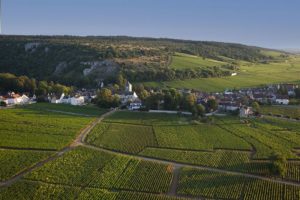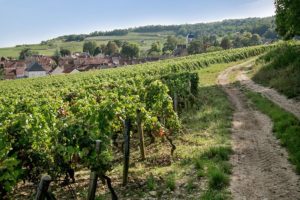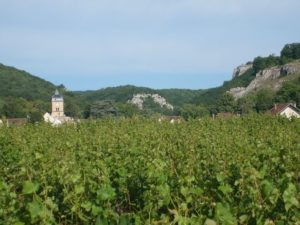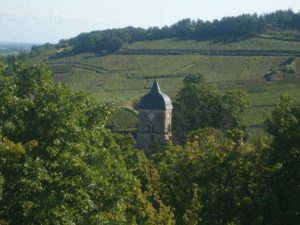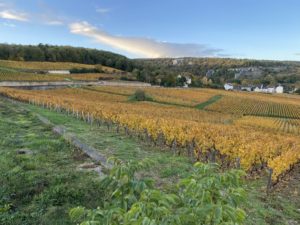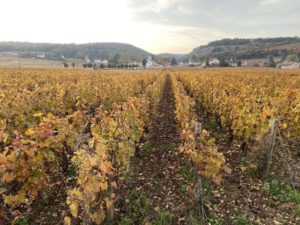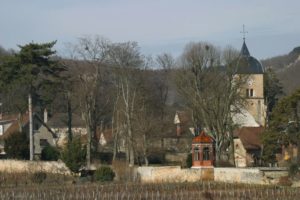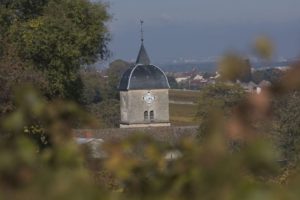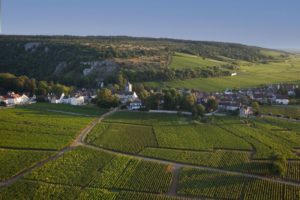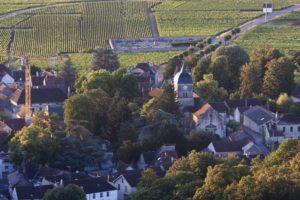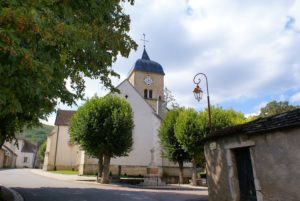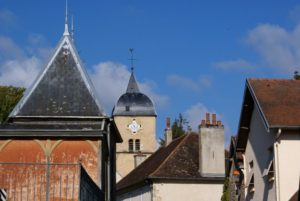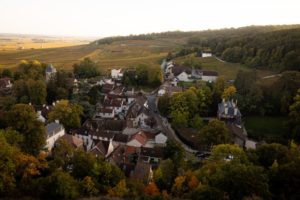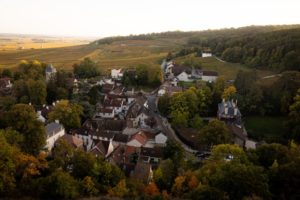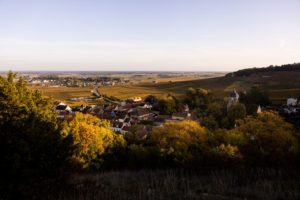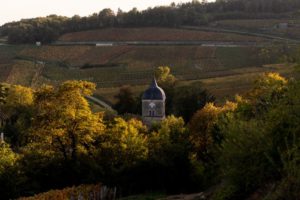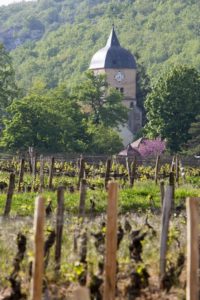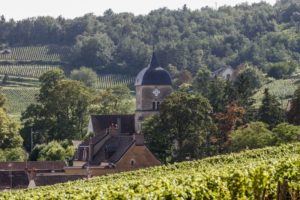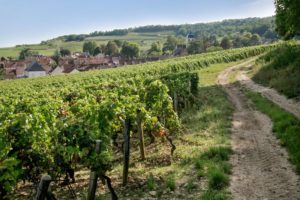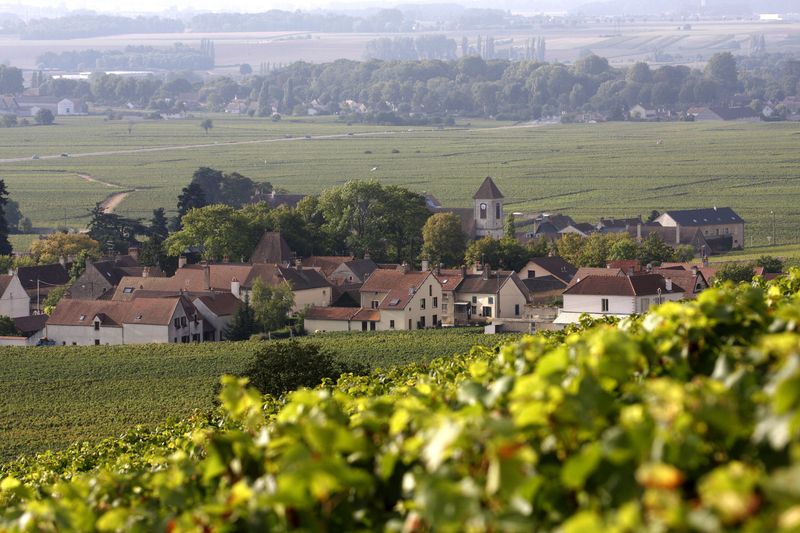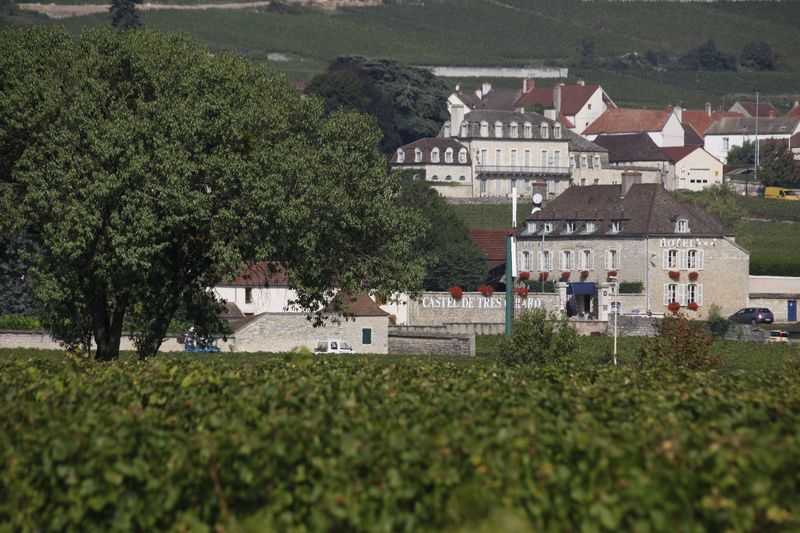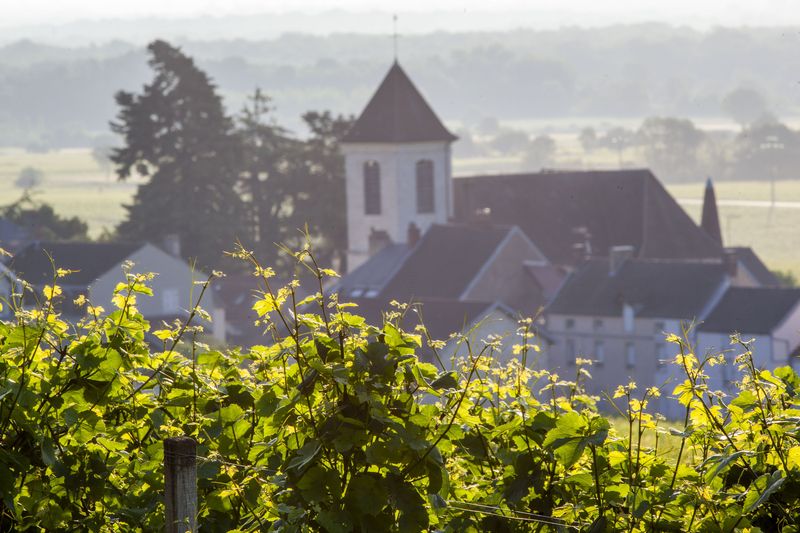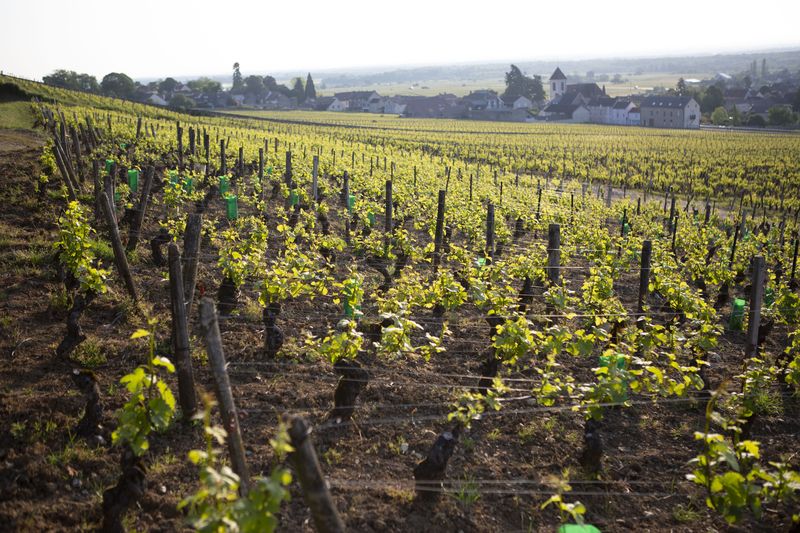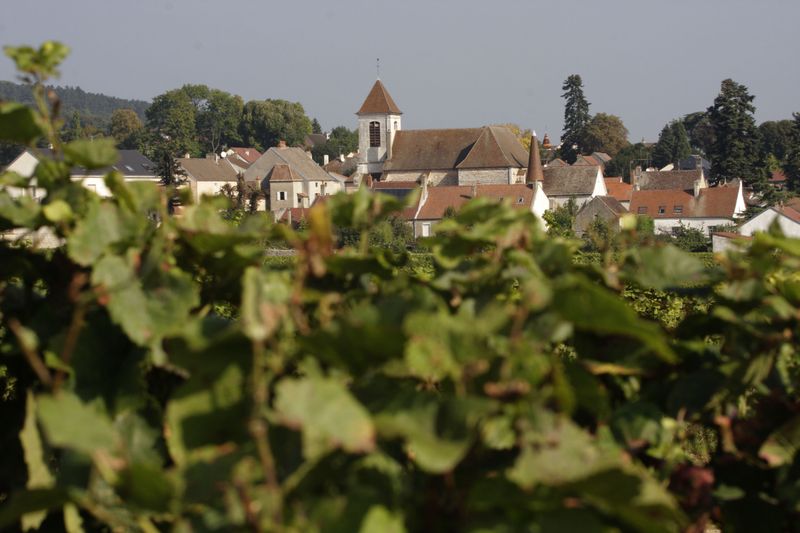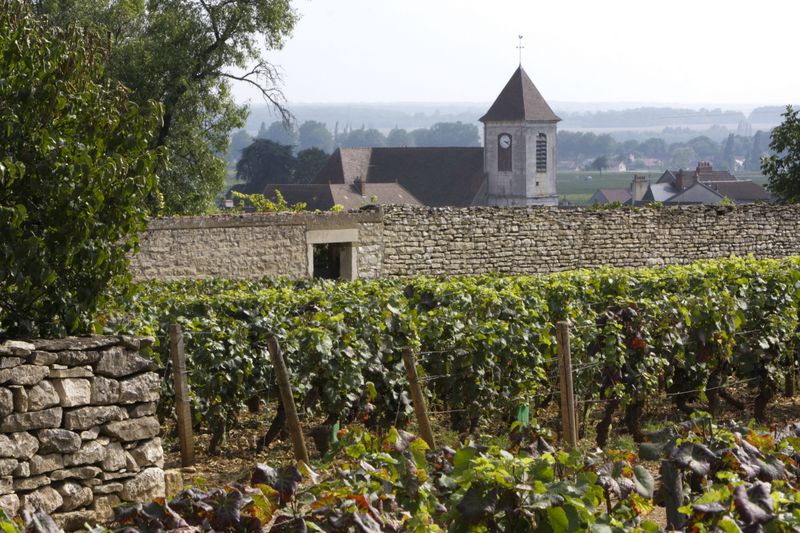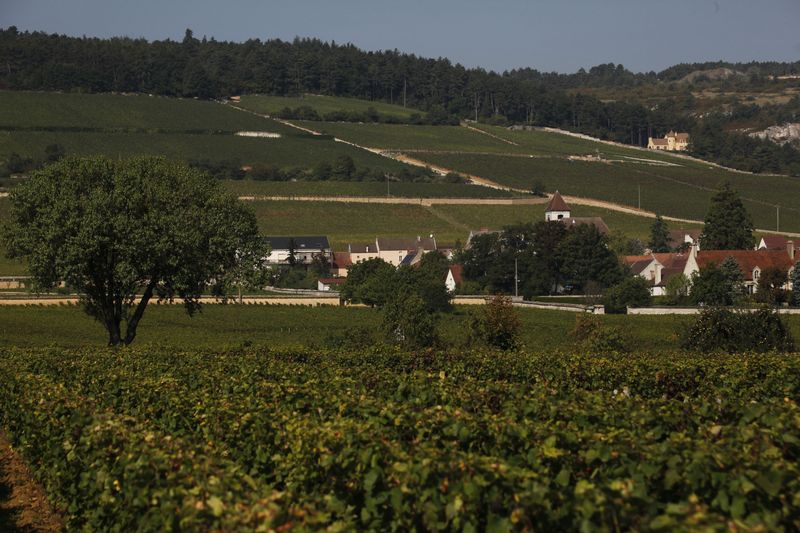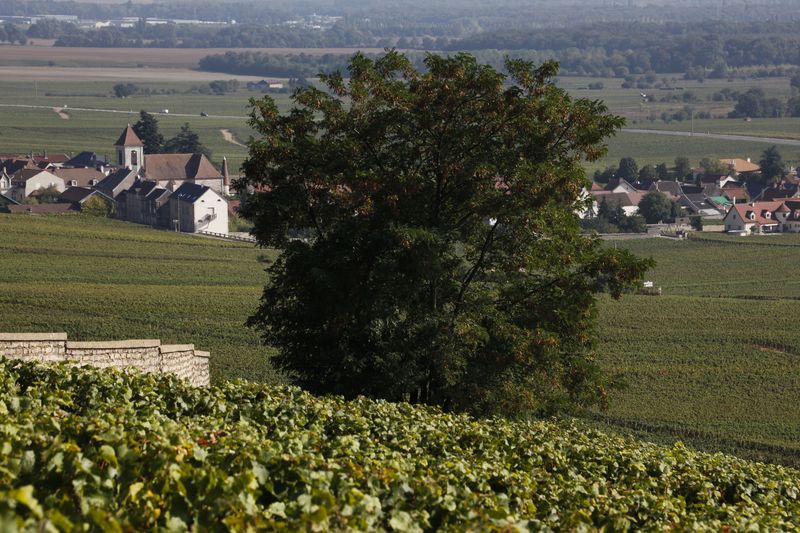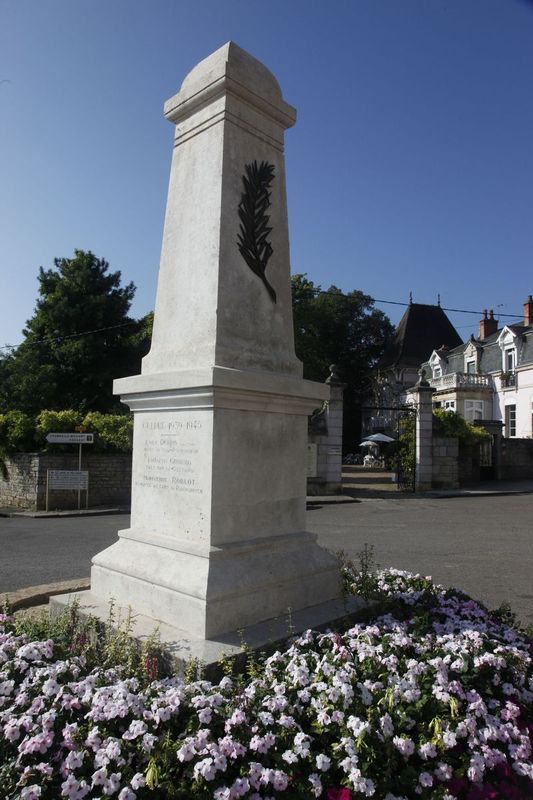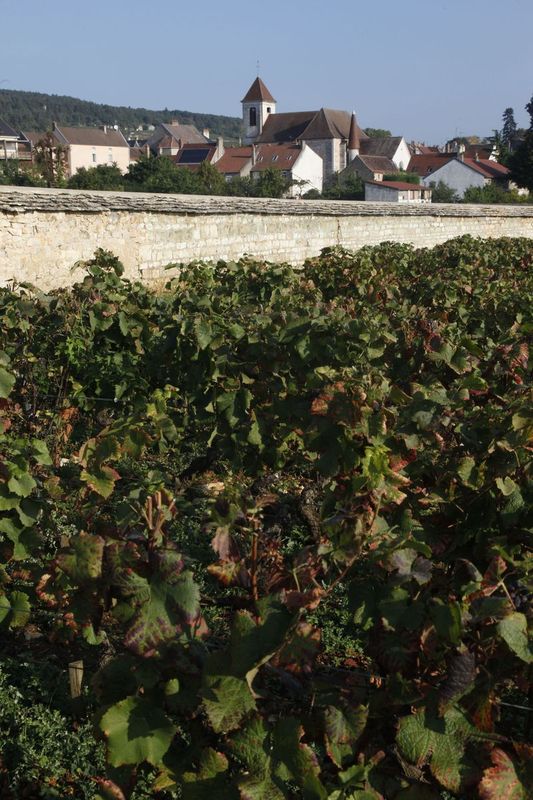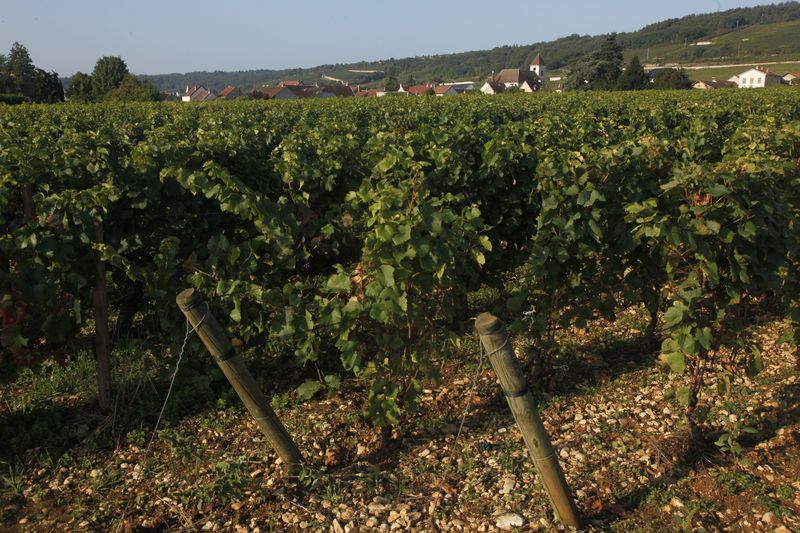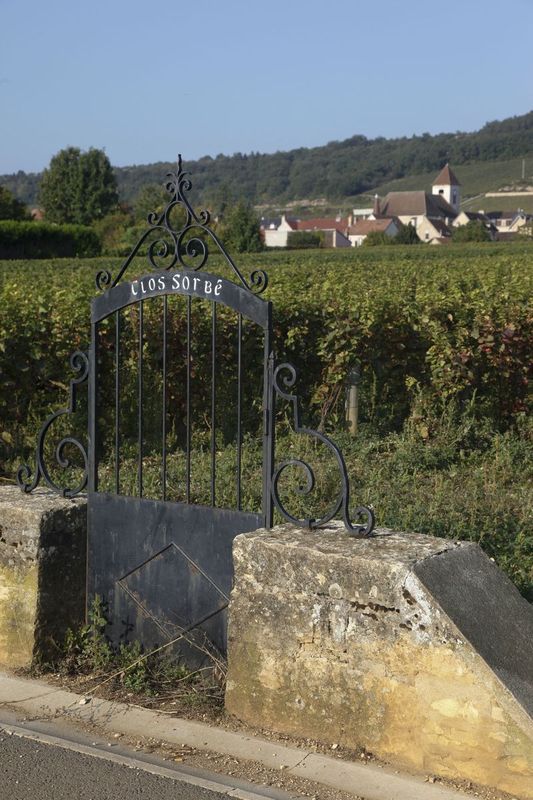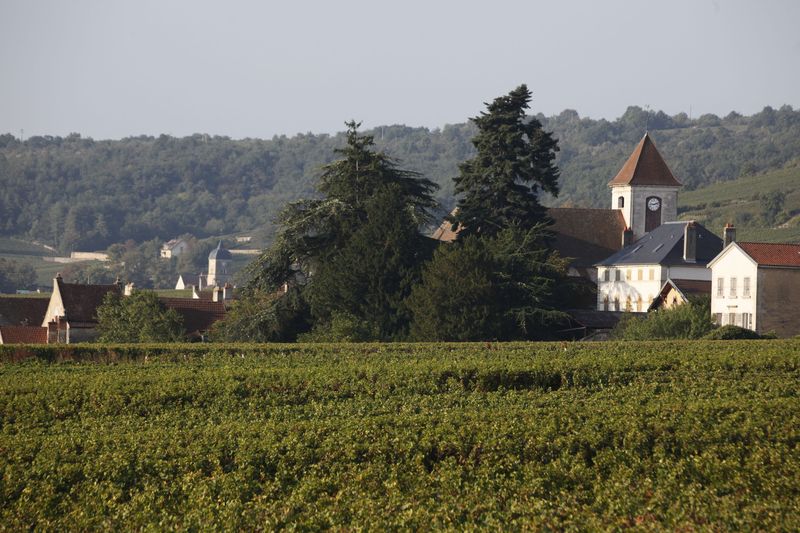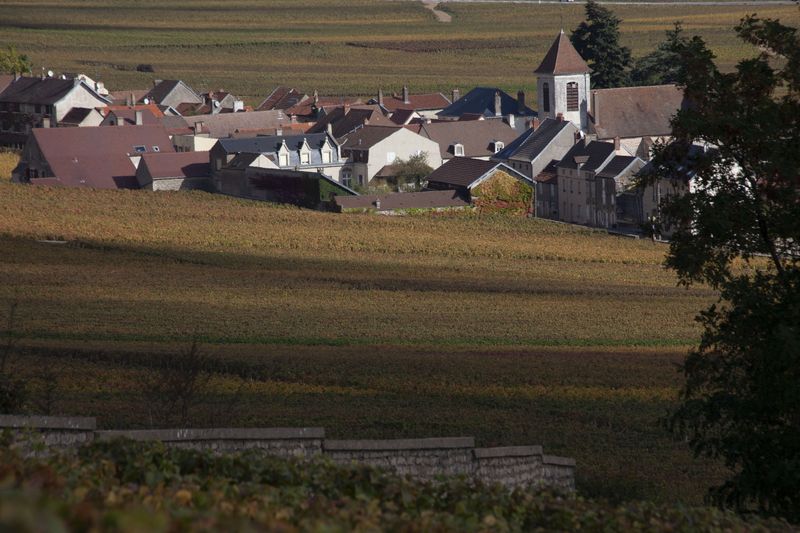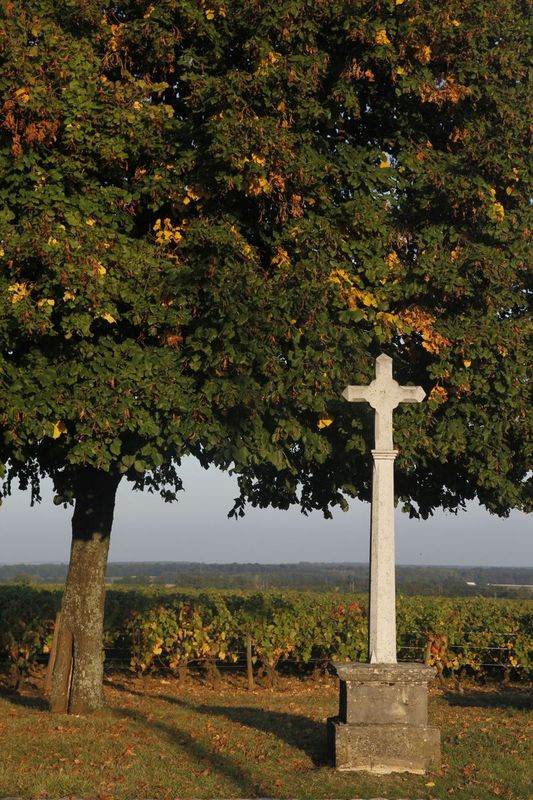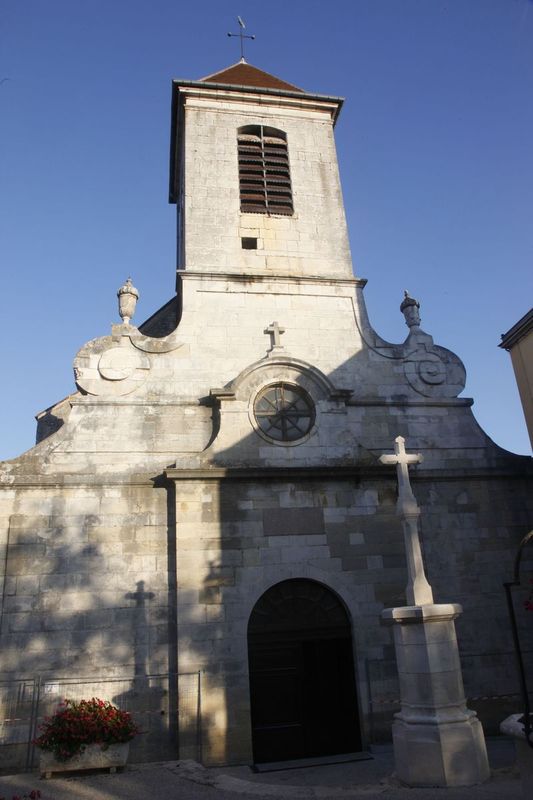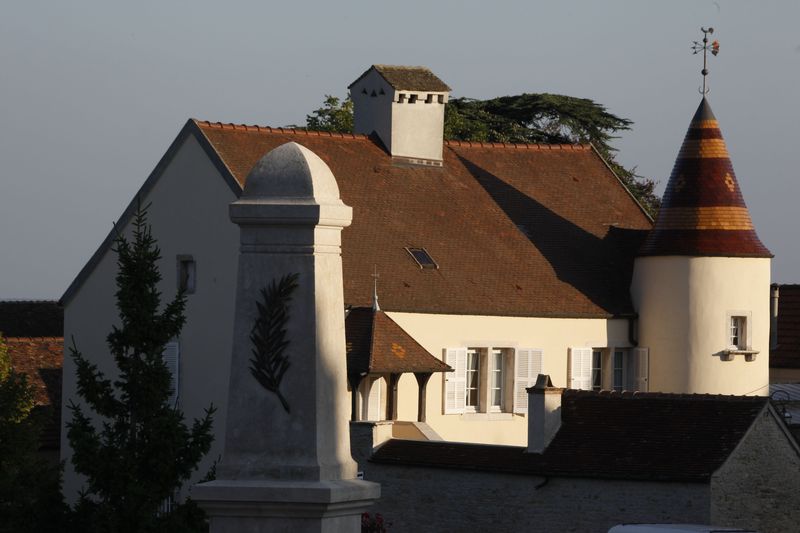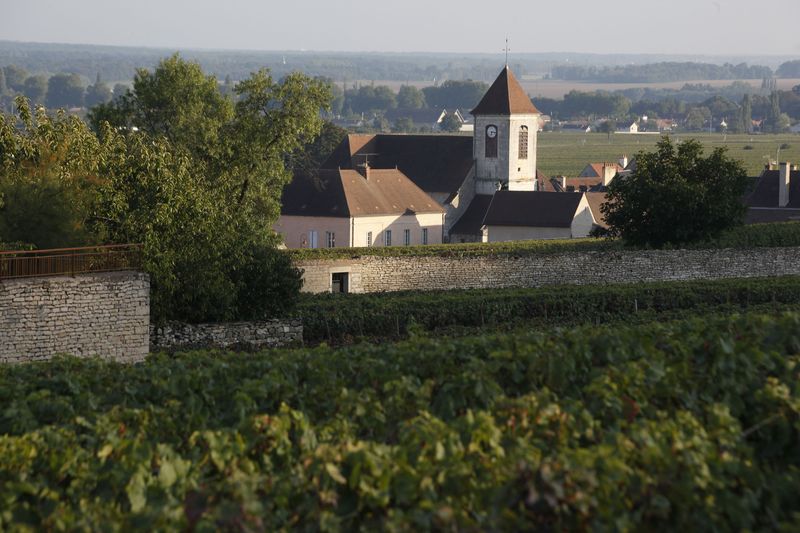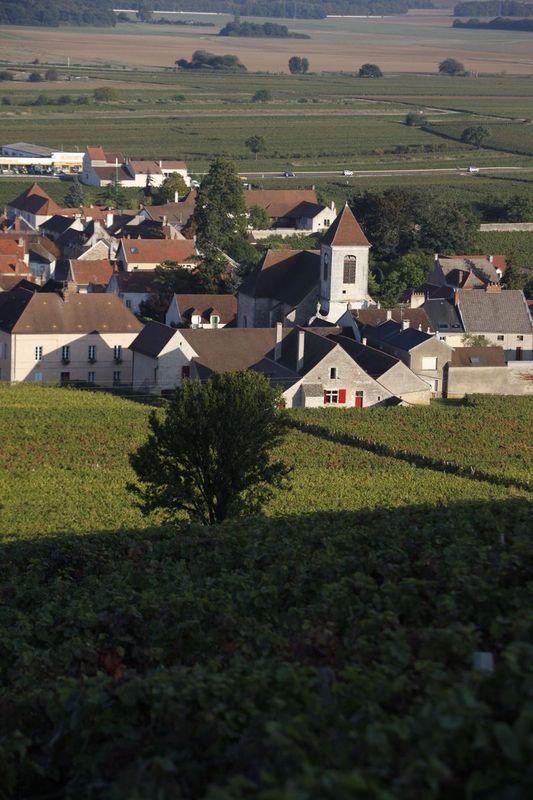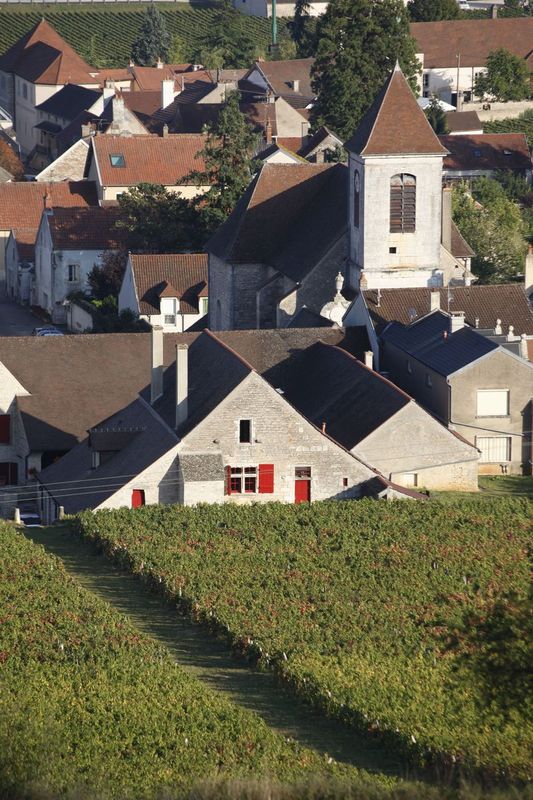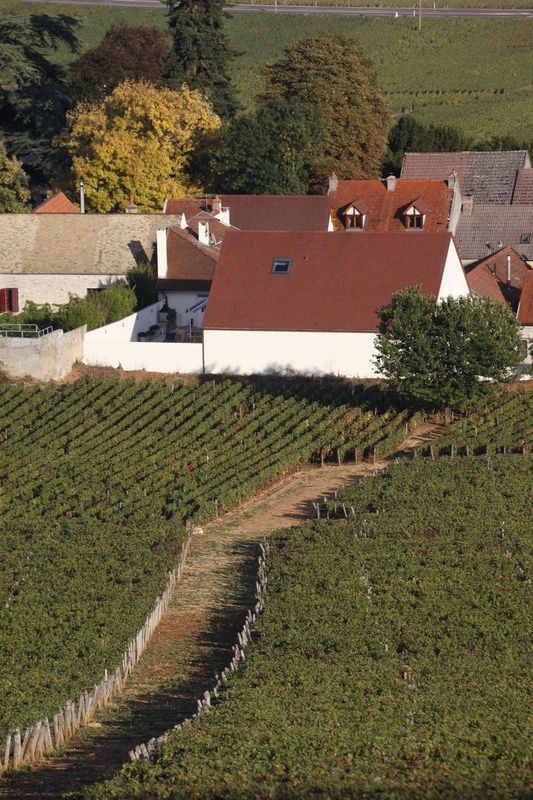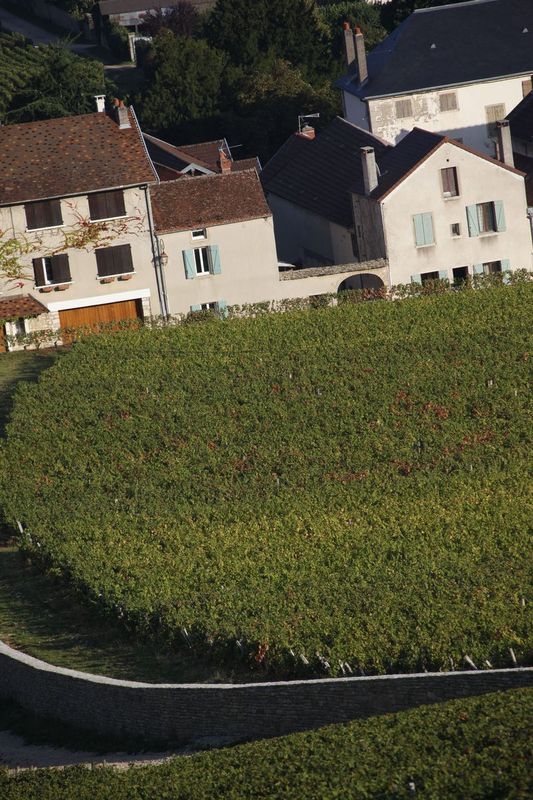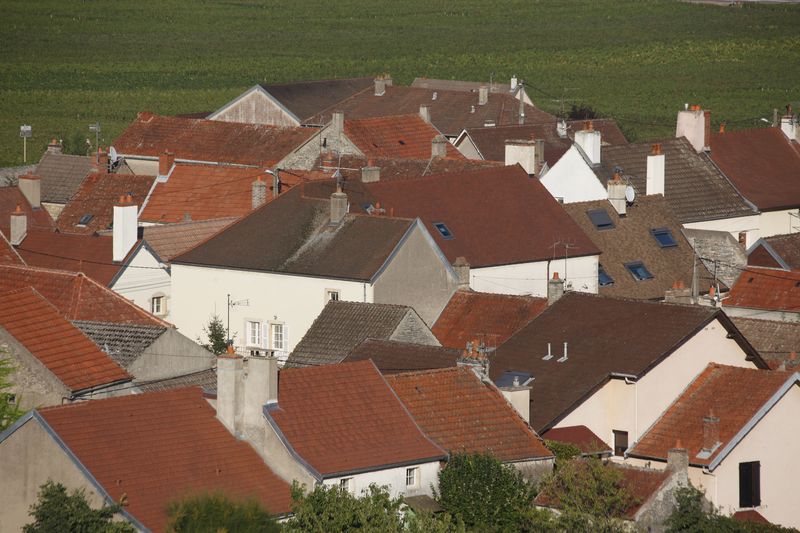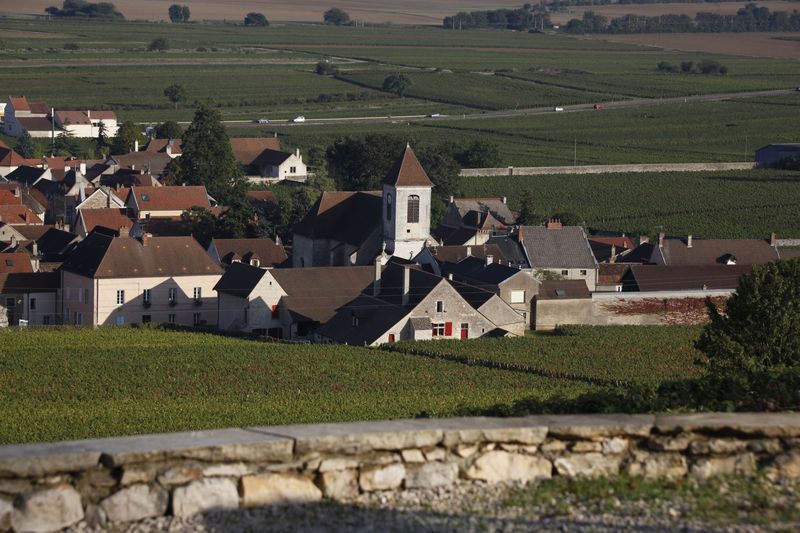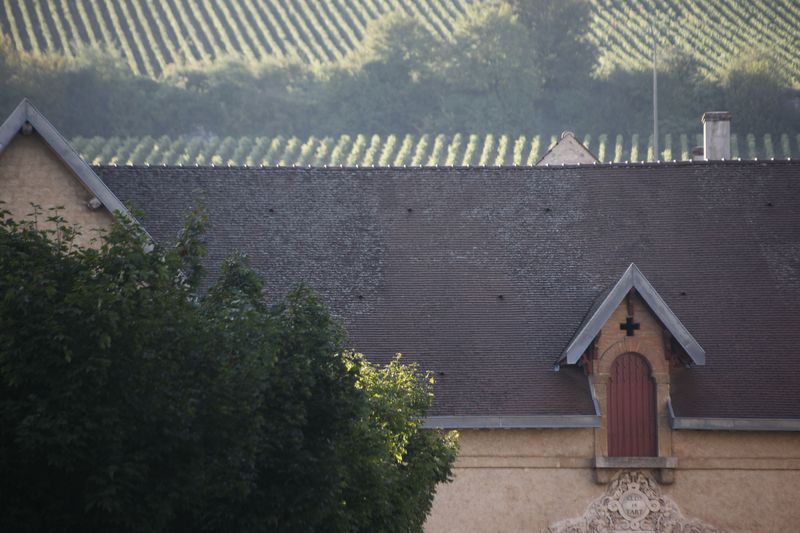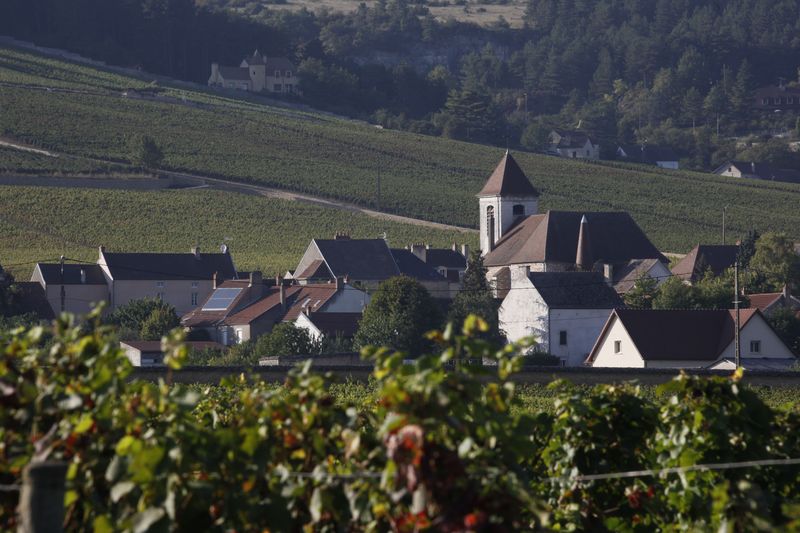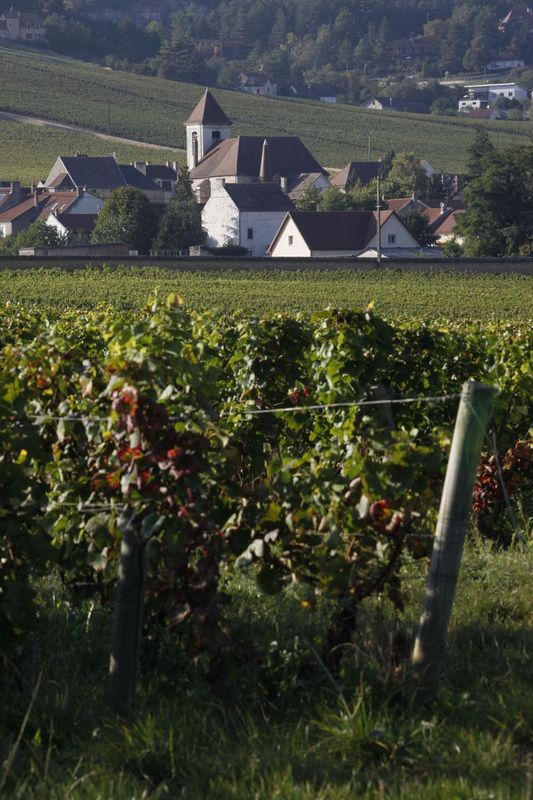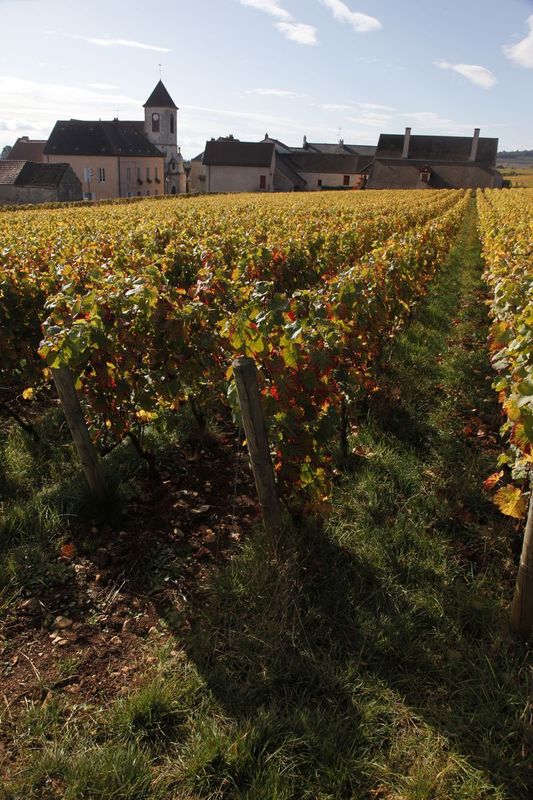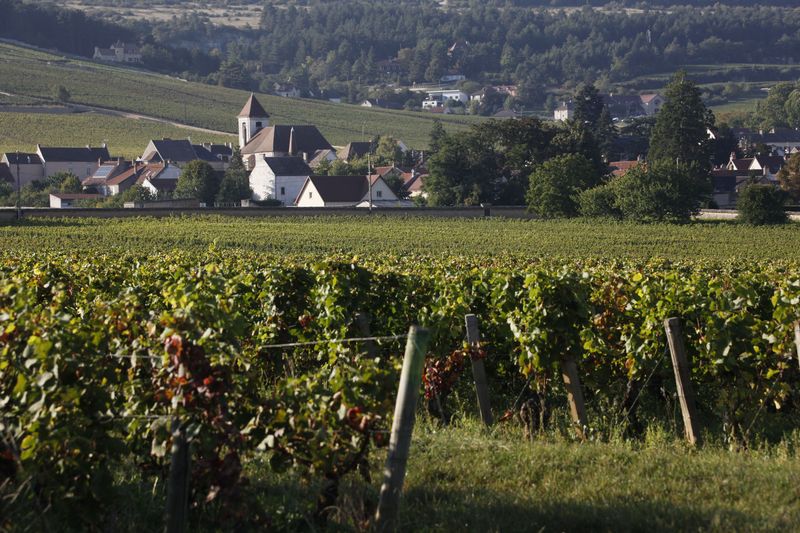


CHAMBOLLE-MUSIGNY
CHAMBOLLE takes its name from the bubbling aspect of the GRONE stream, located in the combe AMBIN, a site classified since 1934, at the foot of the "GROGNOT" rocky outcrop overlooking the village, hence the name "CAMPUS EBULLIENS" or " BOILING FIELD”.
This hamlet attached to the abbey of Cîteaux until the end of the 15th century, became a Parish at the beginning of the 16th century, which allowed the construction of the Church and finally a commune in the 18th century.
In the 11th century, history reports that the "MUSIGNY" already existed and this name of the most famous cru of its terroir carried by a seigneurial family of the region of ARNAY LE DUC, was attached to the name of CHAMBOLLE by decree of April 15 1878.
The village can be proud of having a TILLEUL with a circumference of 4.70 meters, planted under Sully, Minister of Agriculture of Henri IV, which stands in all its majesty, facing the Church, on the route of the Grands Crus.
CHAMBOLLE-MUSIGNY within the framework of the protection of its site was the first municipality in COTE D'OR to create a protected environment zone in order to prevent the establishment of buildings in the vineyards.
On January 22, 1938, the brotherhood of TASTEVIN knights relaunched events linked to Saint-Vincent and organized the first major Saint-Vincent Tournante in CHAMBOLLE-MUSIGNY, which had the honor and privilege of also organizing those of 1954, 1979 and in 2003 the Saint-Vincent revolving of BOURGOGNE.
L’A.O.C CHAMBOLLE-MUSIGNY a été reconnue le 11 Septembre 1936. CHAMBOLLE-MUSIGNY compte 223 ha de vignes dont 24 ha de Grands Crus et 24 Premiers Crus pour une superficie de 61 ha.
Red wine : 152,99 ha (including 58.25 ha in Premier Cru)
White Wine : 0,65ha (Musigny Blanc)
Grands Crus
"Musigny" (red and white): 10, 70ha including 0.65ha of white Musigny
« Bonnes-Mares »: 13.54 ha
Premiers Crus
Among the 24 Premiers crus (61.23 ha) let us mention, la Combe d’Orveau, les Amoureuses, les Combottes, les Fuées, les Plantes, les Charmes, les Hauts-Doix, les Baudes, les Sentiers, les Borniques …
Morey-Saint-Denis
"Ah! Morey is not a country cruncher. It is the country of chatty, lively, bonding people...» Gaston Roupnel, Le Vieux Garain
Morey Saint Denis: The mineral experience of Burgundy climates! Morey Saint Denis affirms its personality in its 40 hectares of Grands Crus and 44 hectares of 1ers Crus which deliver smooth wines, with perfumes of violets in a velvet setting. It is also the village with 10 Clos!
« We can say that he lacks nothing », already wrote Dr. Lavalle in 1855.
"Saint Denis" since 1927, after being called "Morey-en-Montagne" in ancient times, Morey Saint Denis is mentioned in the Cartulary of Cîteaux under the name of Mirriacum Villa in 1120 and then Moreium in 1187. Marked by the powerful House of Vergy, by the abbeys of Cîteaux and Tart, by great Burgundian families, the history of the village is associated with that of its wine, the "Clos Saint-Denis".
Morey took off in the 12th century when Savary and Elizabeth de Vergy donated this seigneury to the nascent Abbey of Citeaux.
Witnesses of this time the Abbatial Domain of Clos des Bernardines today Clos de Tart (12th and 15th century), the Cistercian apse of the church (13th) its nave and its facade being from 1707.
MOREY-SAINT-DENIS, which had the honor and privilege of organizing the Saint Vincent Tournantes of 1952, 1973 and, in 2003, the Saint-Vincent Tournante de BOURGOGNE.
The Appellation d'Origine Contrôlée "Morey-Saint-Denis" was established in 1936.
Rouges : 88,48 ha
(dont 39,42 ha en Premier Cru)
Blancs : 5,68 ha
(dont 1,66 ha en Premier Cru)
Grands Crus
« Clos Saint-Denis » : 6,62 ha
« Clos de la Roche » : 16,90 ha
« Clos de Tart » : 7,53 ha
« Clos des Lambrays » : 8,84 ha
« Bonnes-Mares » : 1,51 ha
Parmi les 20 Premiers Crus (44,20 ha) citons, les Charmes, le Clos des Ormes, les Faconnières, les Millandes, les Monts-Luisants, les Genavrières, les Chaffots, le Clos Sorbè, les Chenevery, la Riotte, les Blanchards, les Ruchots, la Bussière …
Our Saints-Vincents Tournantes
En 1938, Chambolle-Musigny accueille la première édition de la Saint-Vincent tournante. En 1964, Saint-Romain ouvre les caveaux du village. En 1971, à Rully, la première affiche de la Saint-Vincent est créée. En 1973, Morey-Saint-Denis propose un verre gravé pour la dégustation.
Chambolle-Musigny (January 22, 1938, 1st edition)
On January 22, 1938, the village of Chambolle-Musigny hosted the 1st edition of the Saint-Vincent Tournante, accompanied by a little snow and, above all, a layer of frost! On the program of the festival initiated by the Confrérie des Chevaliers du Tastevin: a mass celebrated in the village in the Sainte-Barbe-et-Saint-Sébastien church – recognizable among all thanks to its dome more Franche-Comtois than Burgundian –, the parade of the 6 statuettes of Saint Vincent present that day, the enthronement of old winegrowers within the Brotherhood and a Chapter (banquet), held at the Château du Clos de Vougeot and organized by the latter.
« Margot Cigan, Archiviste de la Confrérie des Chevaliers du Tastevin »
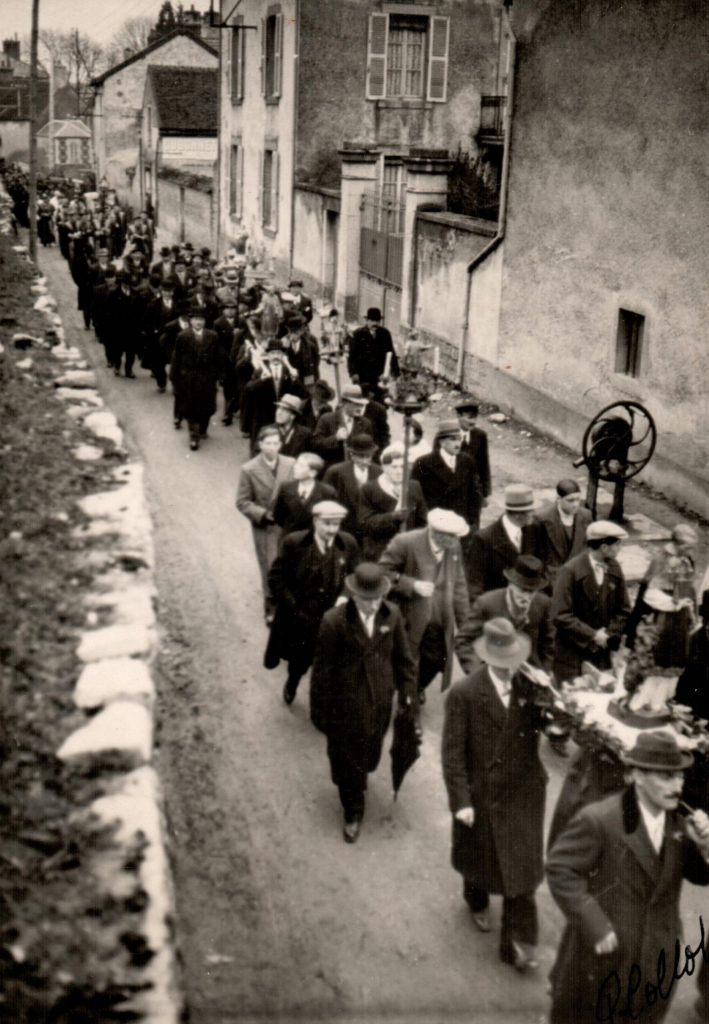
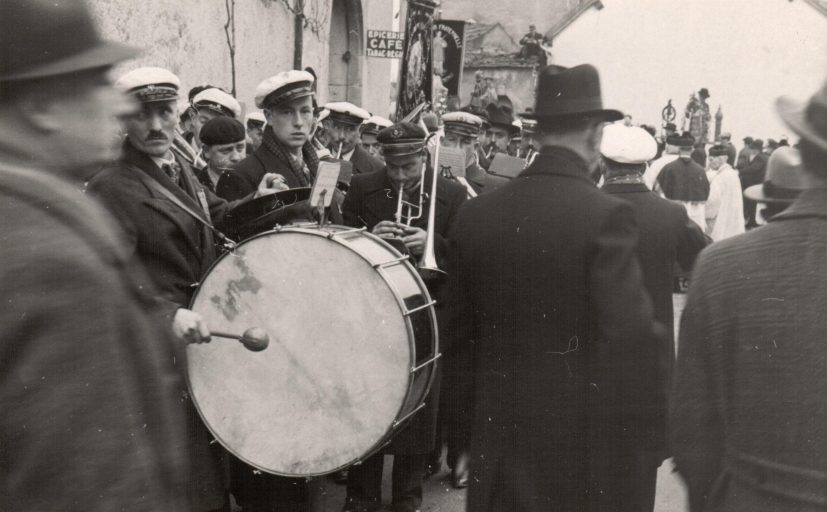
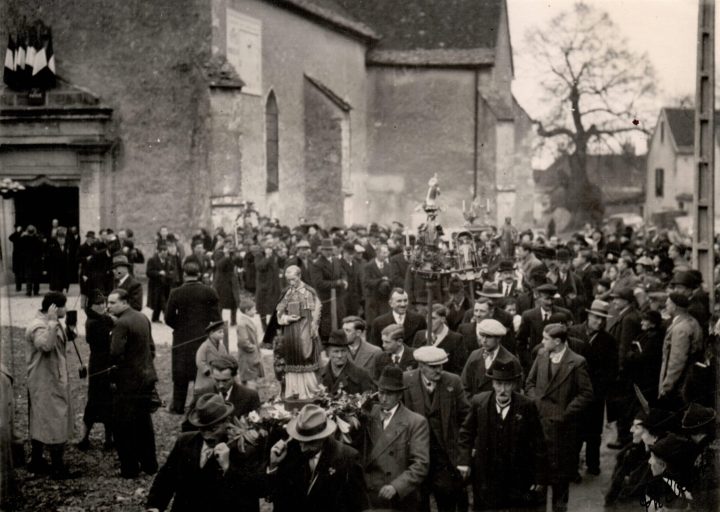
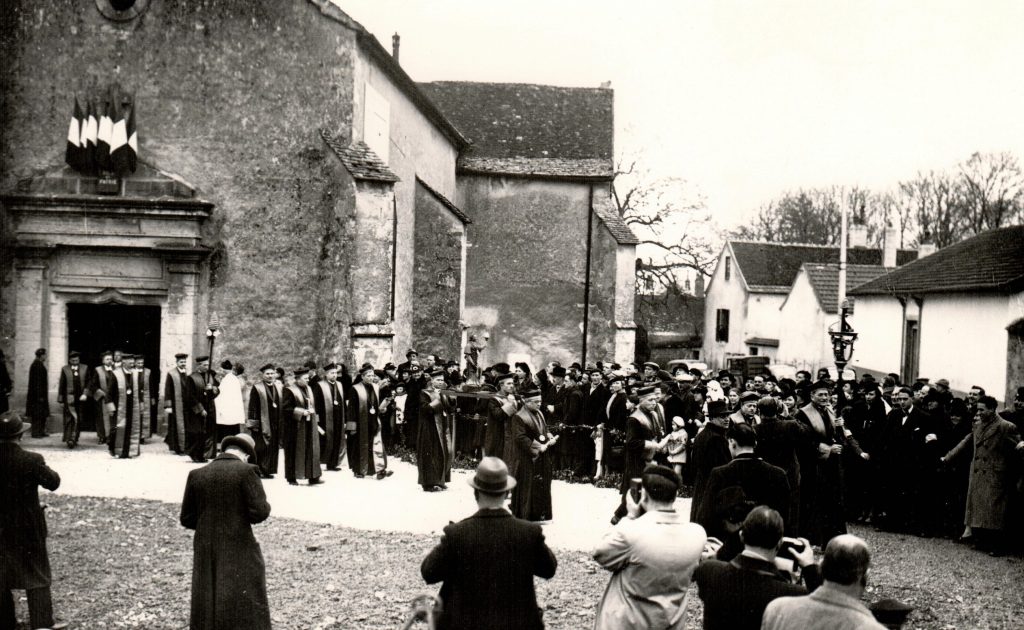
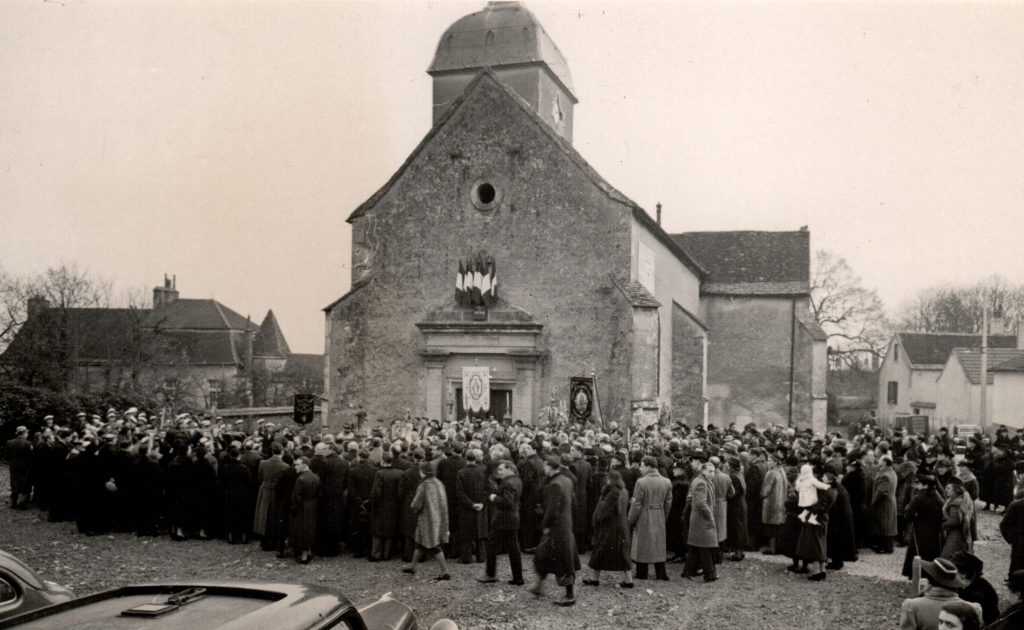
Archives de la Confrérie des Chevaliers du Tastevin
Morey-Saint-Denis (January 26, 1952, 8th edition)
It was under a thick blanket of snow that the village of Morey-Saint-Denis hosted the 8th edition of the Saint-Vincent Tournante, on January 26, 1952. For the first and only time in the history of the wine festival, the mass was celebrated by an abbot of Cîteaux, the "Reverendissime Father" Dom Godefroy Belorgey. Another illustration of the popularity of the event, 39 statuettes and Mutual Aid societies joined the procession and took part in the festivities.
« Margot Cigan, Archiviste de la Confrérie des Chevaliers du Tastevin »
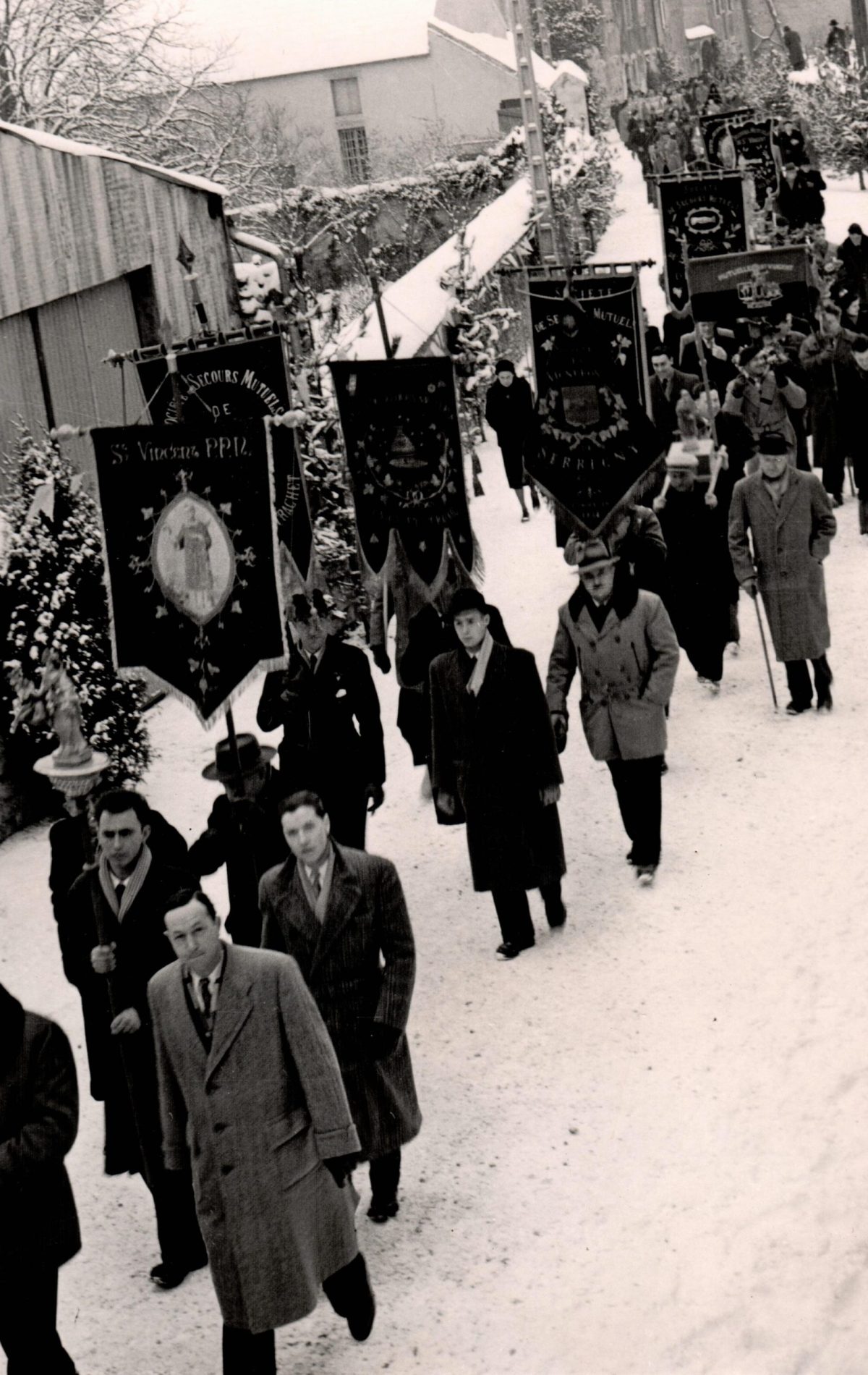
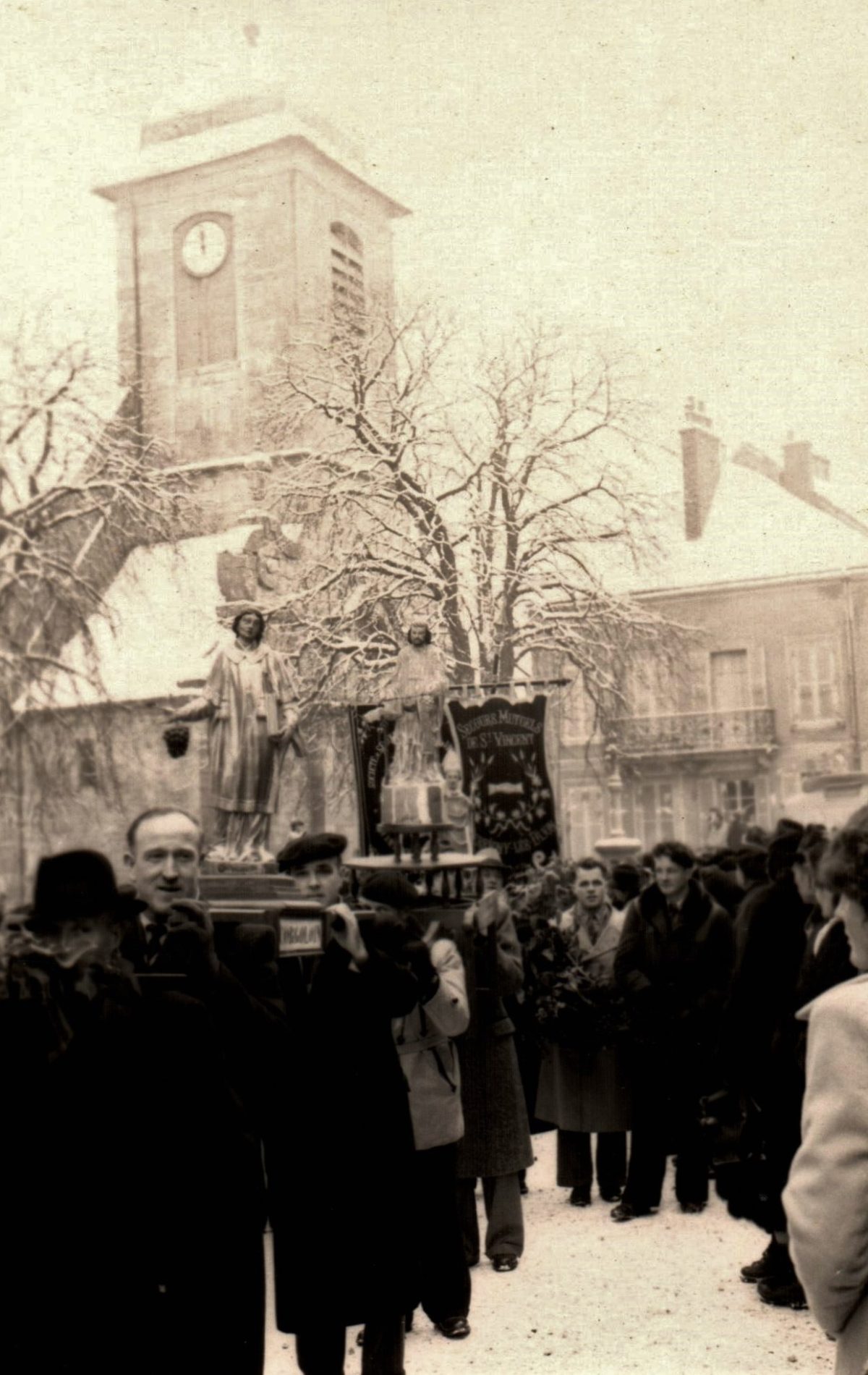
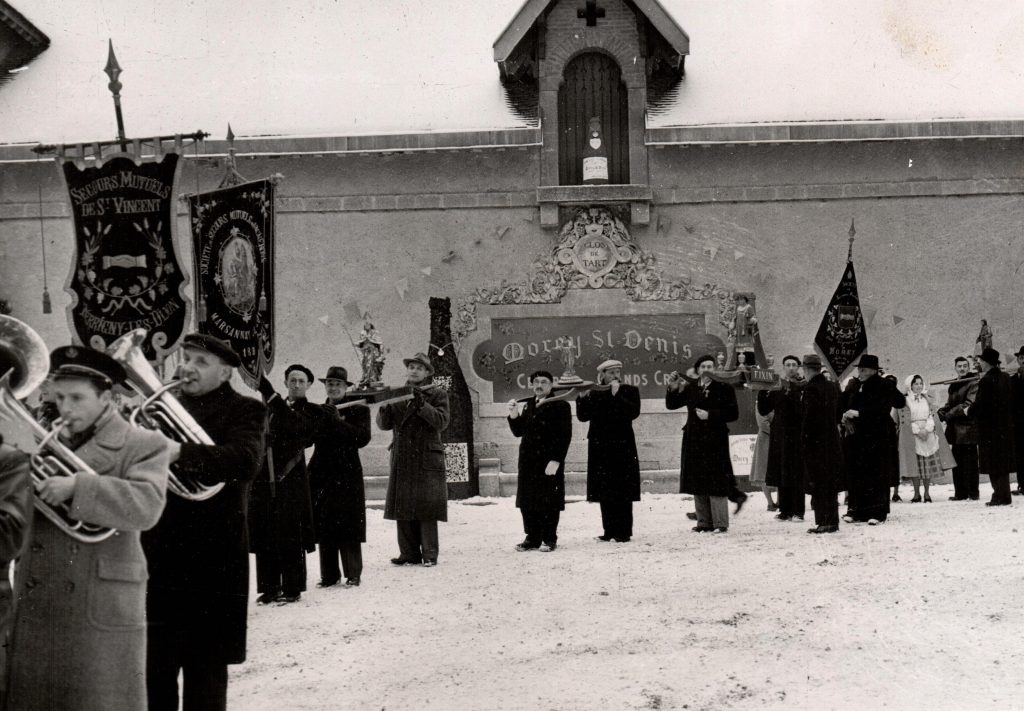

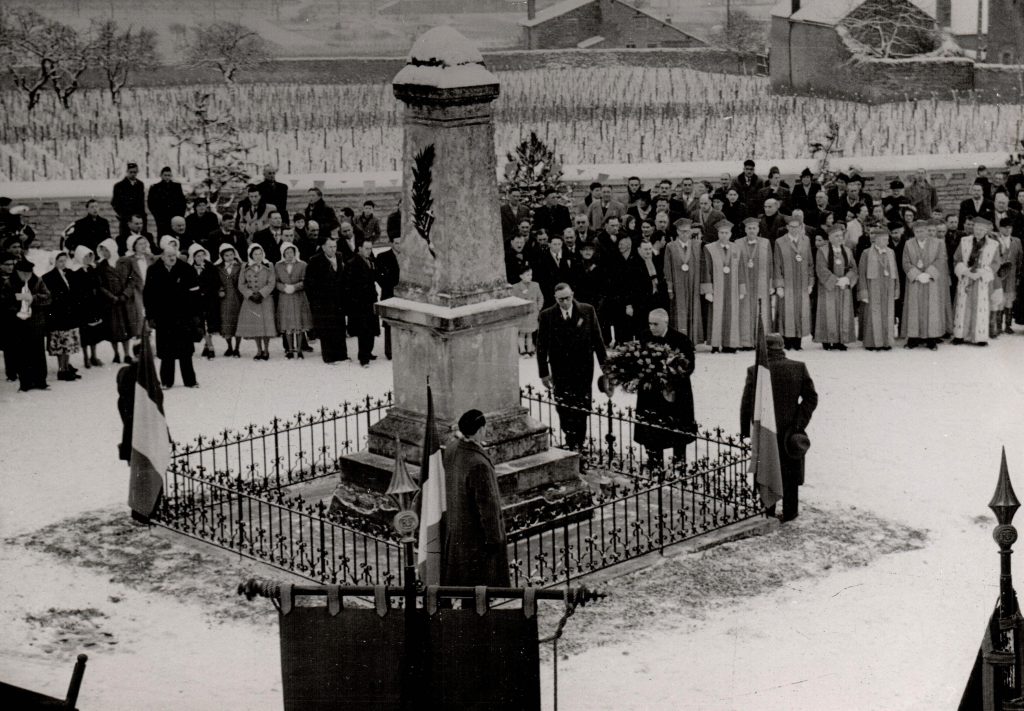
Archives de la Confrérie des Chevaliers du Tastevin
Chambolle-Musigny (January 30, 1954, 10th edition):
The 10th edition of the Saint-Vincent Tournante, which was held on January 30, 1954, was an opportunity to go back to basics, the festivities being once again organized by Chambolle-Musigny. Despite the biting cold, 41 statuettes were present and paraded through the garlanded streets of the village, punctuated by arches and small columns made essentially of flowers and barrels. This edition also had a particular flavor for the village, because it took place the very year of the commemoration of the Centenary of the Société de Secours Mutuels de Chambolle-Musigny, created in 1848 but recognized as being of public utility only in 1854.
« Margot Cigan, Archiviste de la Confrérie des Chevaliers du Tastevin »
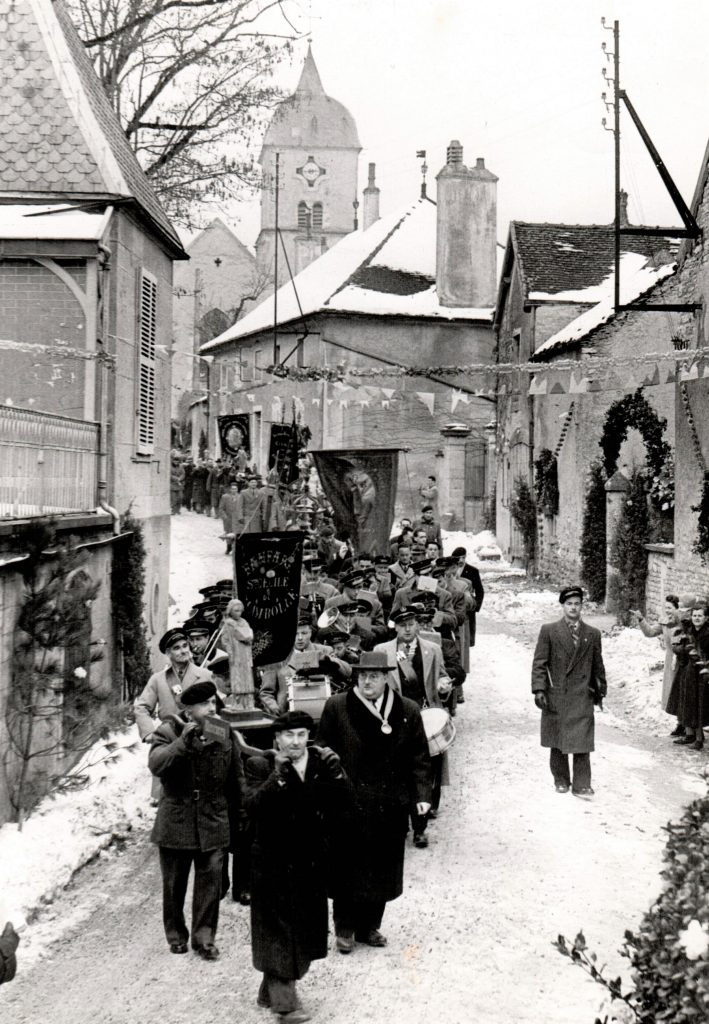
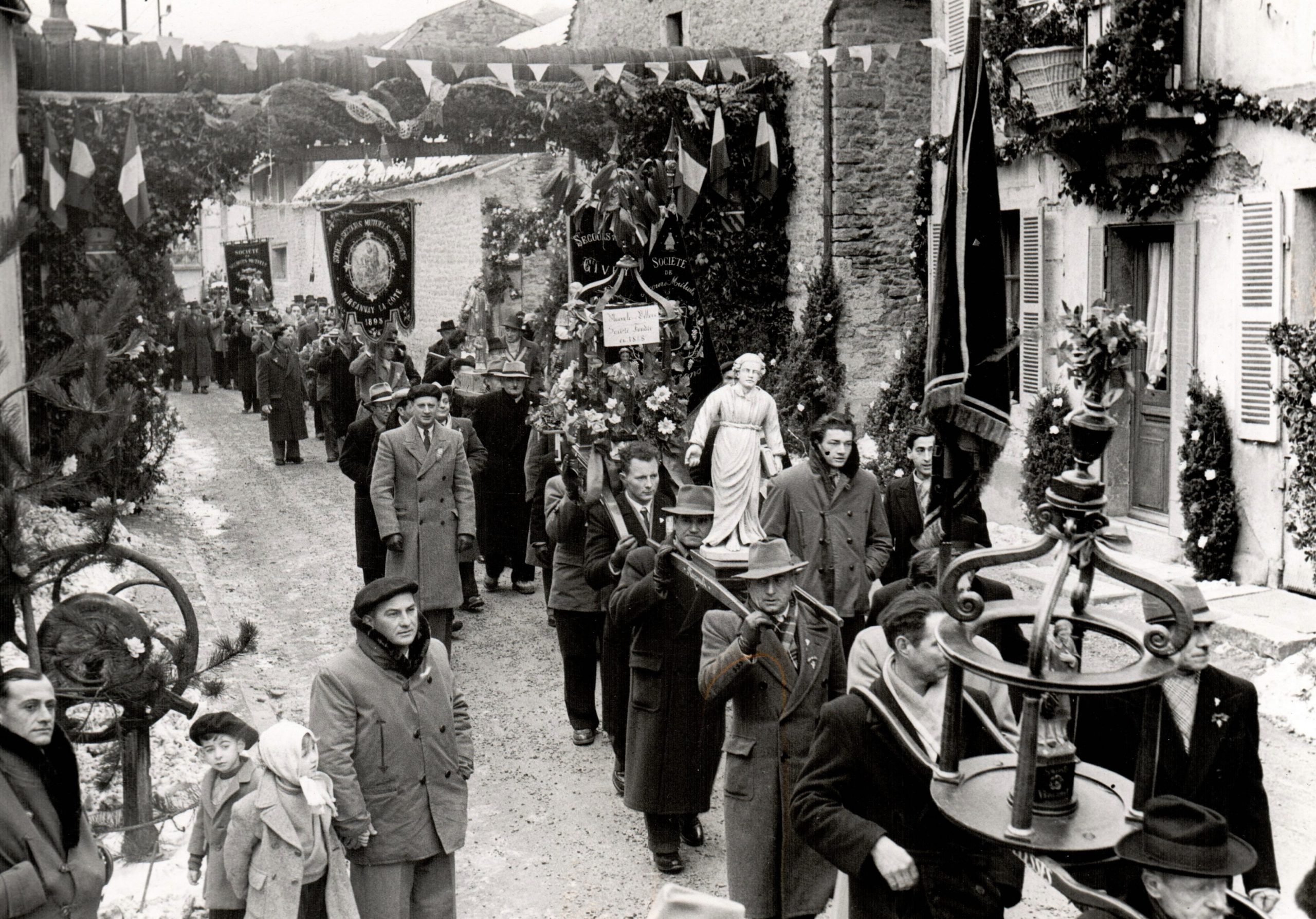
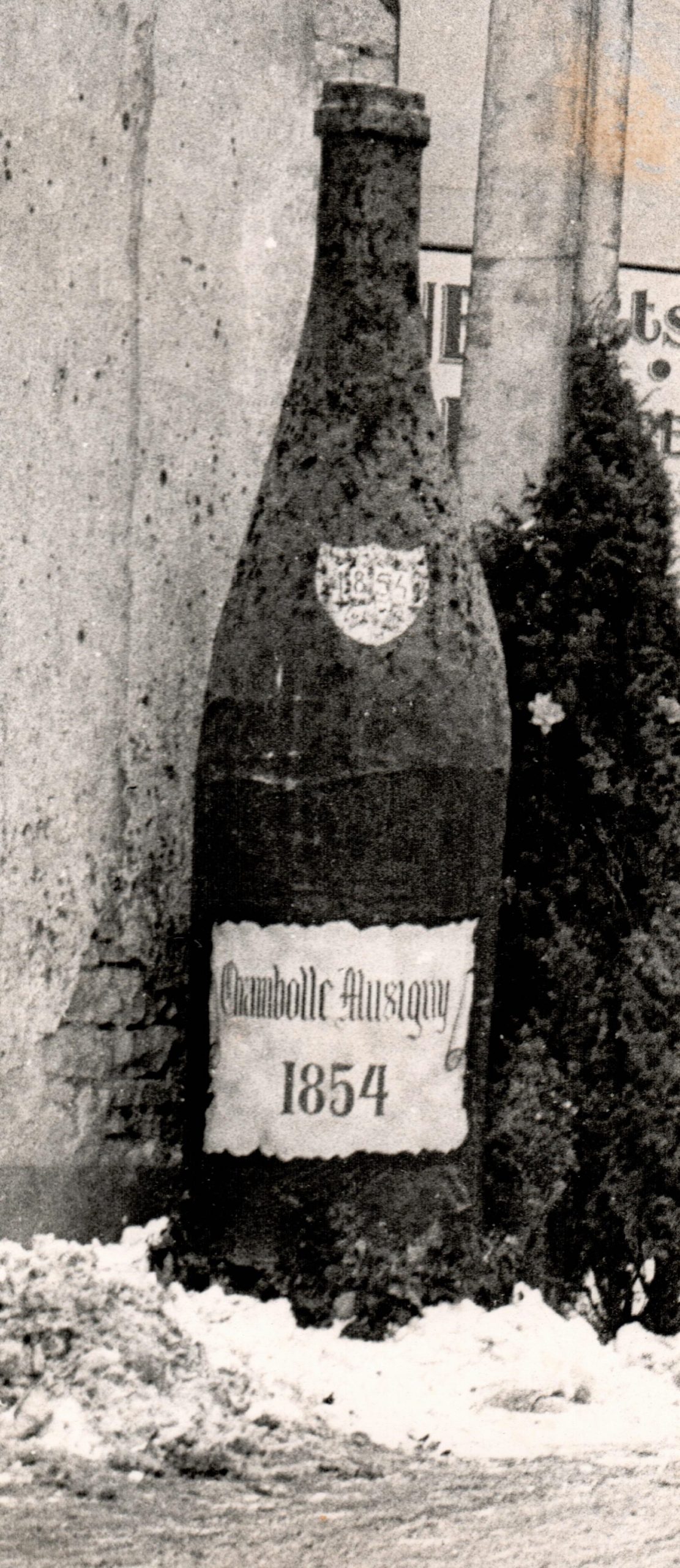

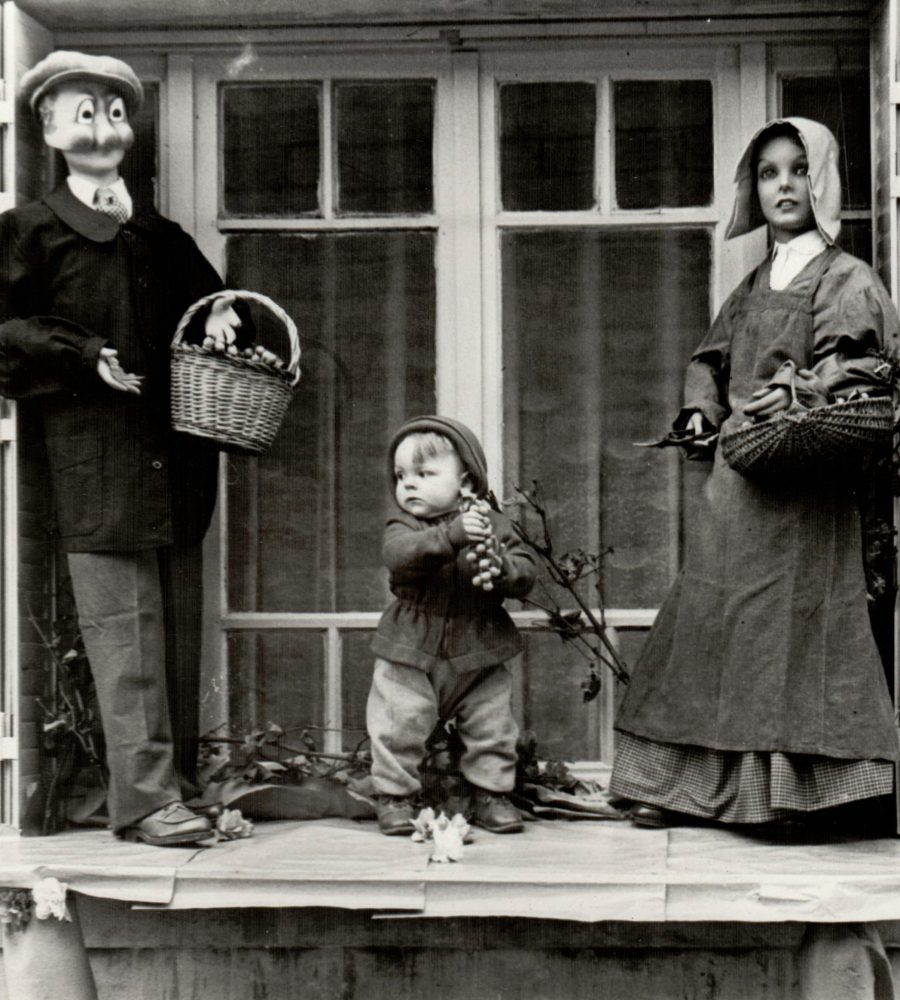
Archives de la Confrérie des Chevaliers du Tastevin
Morey-Saint-Denis (January 27, 1973, 29th edition):
By hosting the Saint-Vincent Tournante for the 2nd time, on January 27 and 28, 1973, Morey-Saint-Denis could not have guessed that this 29th edition would take place under heavy and continuous rain... Never mind! The sadness of the day was counterbalanced by the decorations of the village, made of triumphal arches formed by benatons or imposing tastevins suspended above the procession, while 20,000 multicolored flowers came to adorn trees and dwellings, giving a glimpse of the gaiety of spring in the heart of this very humid end of January. Highlight of the day, 10 old winegrowers totaling 500 years of history were inducted into the Confrérie des Chevaliers du Tastevin.
« Margot Cigan, Archiviste de la Confrérie des Chevaliers du Tastevin »
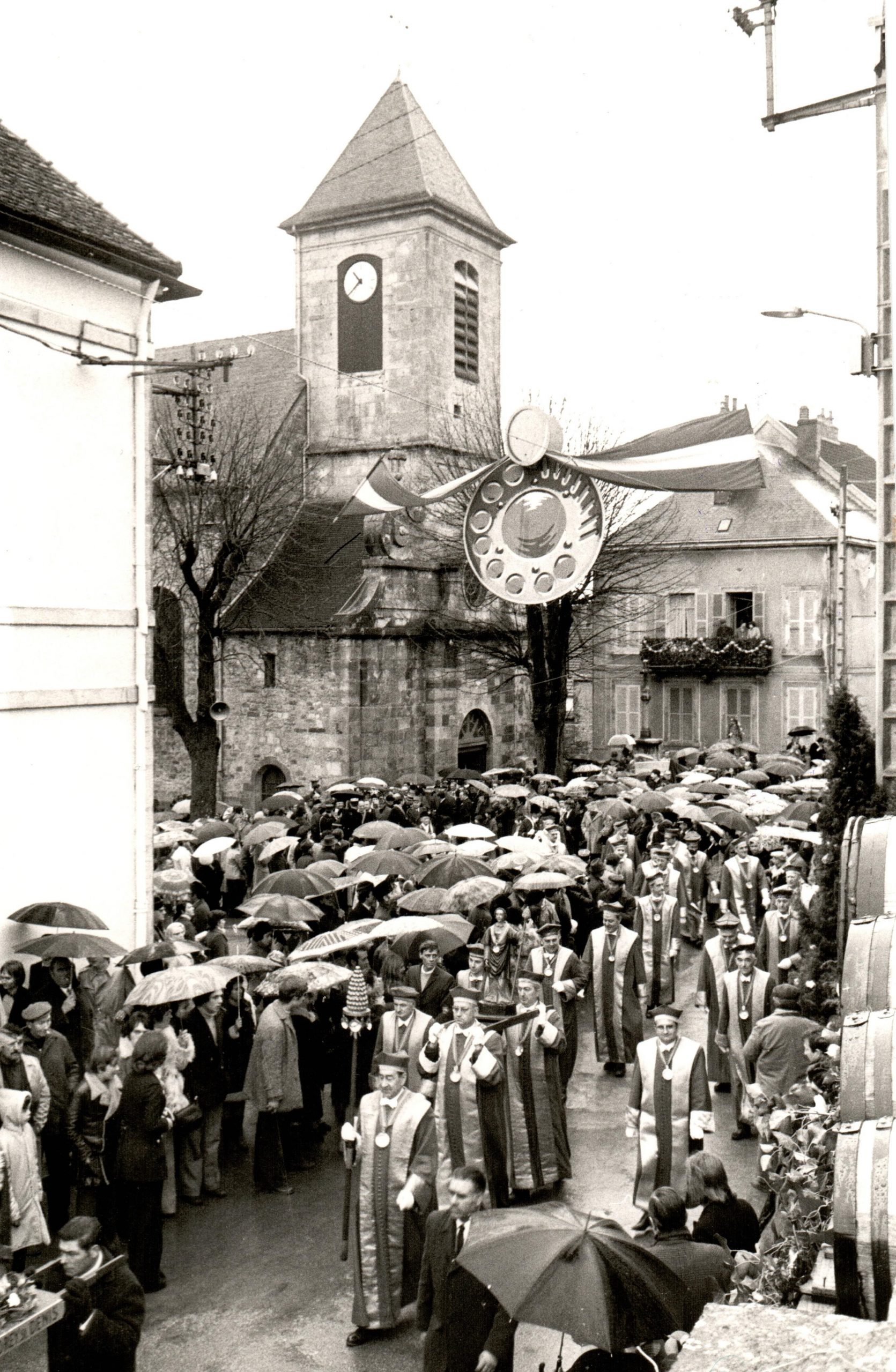
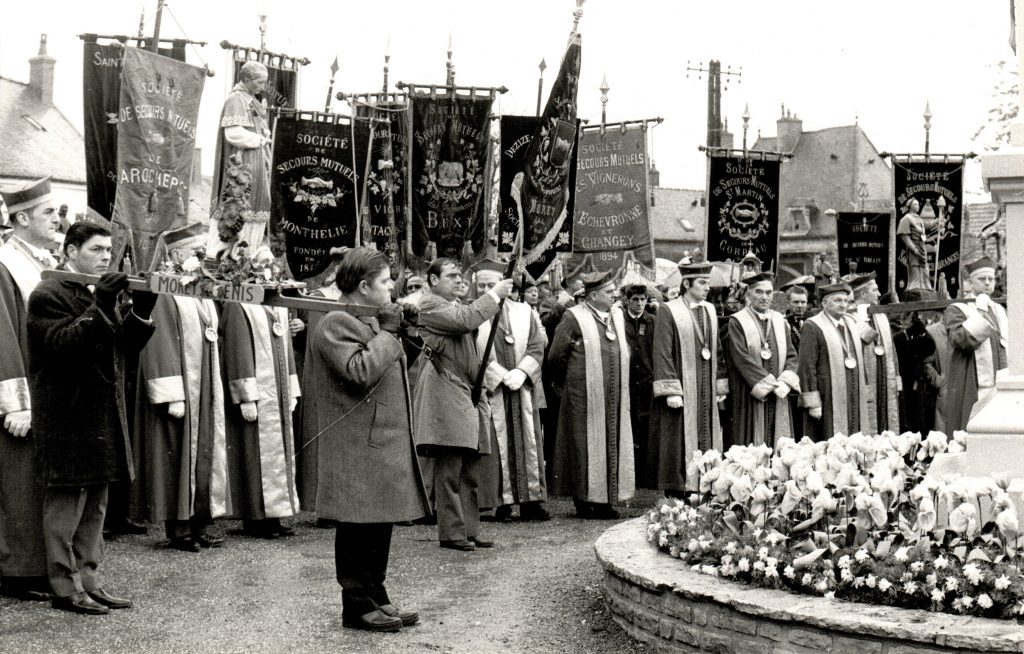


Archives de la Confrérie des Chevaliers du Tastevin
Chambolle-Musigny (January 27, 1979, 35th edition):
As in 1973 in Morey-Saint-Denis, the 35th edition of the Saint-Vincent Tournante, organized on January 27 and 28, 1979 in Chambolle-Musigny, took place in the rain, even making it necessary to shorten the course of the procession in the village. This time, some 100,000 crepe paper flowers were made to escort more than 70 mutual aid societies through the streets of Chambolle-Musigny. Notable fact: delegations from the American and German wine towns of Sonoma and Schwabenheim.
« Margot Cigan, Archiviste de la Confrérie des Chevaliers du Tastevin »
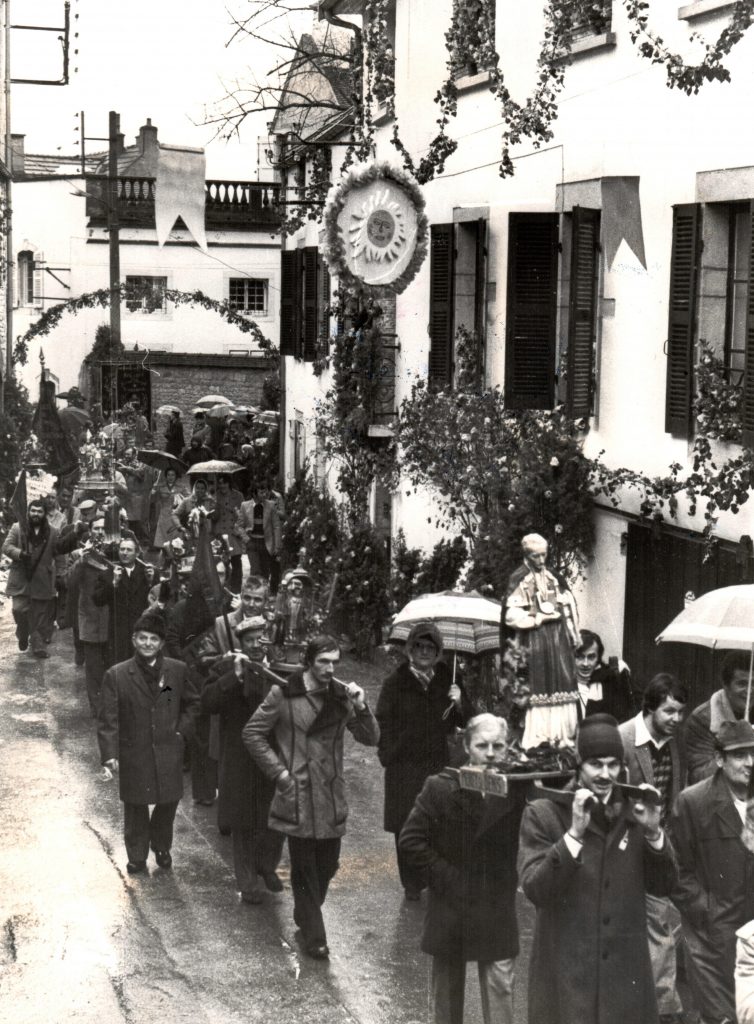


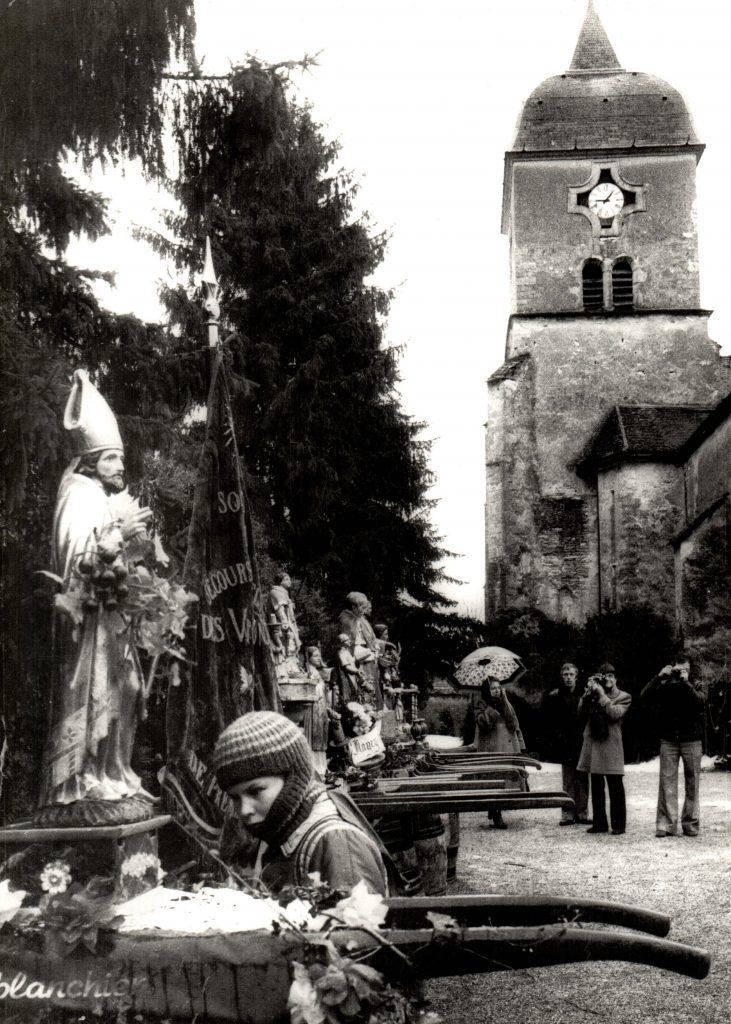
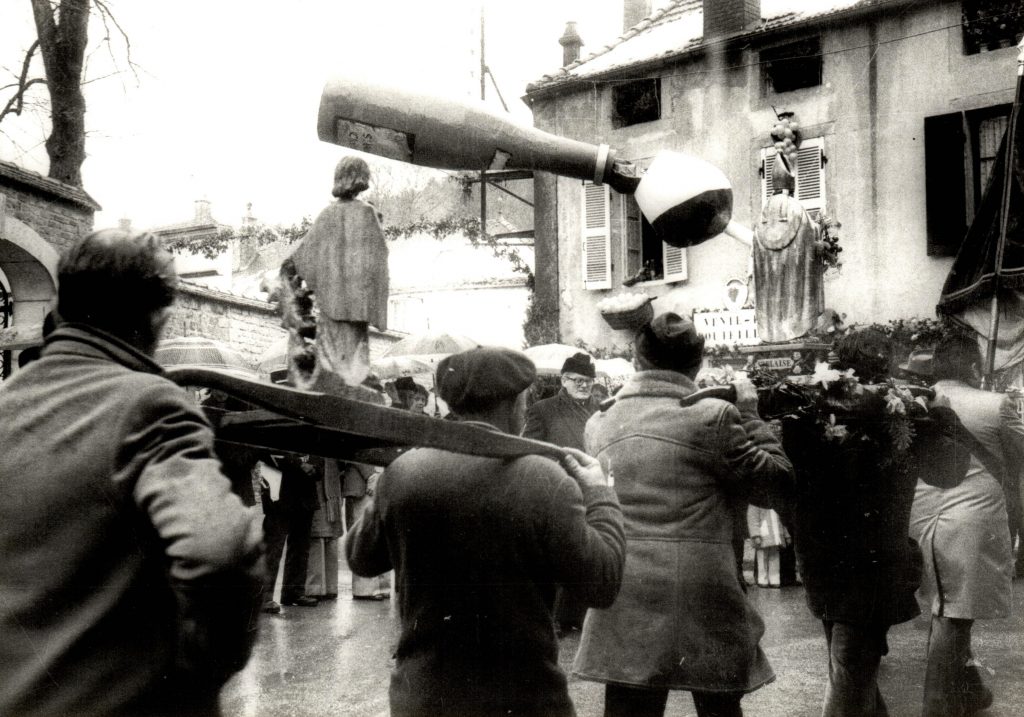
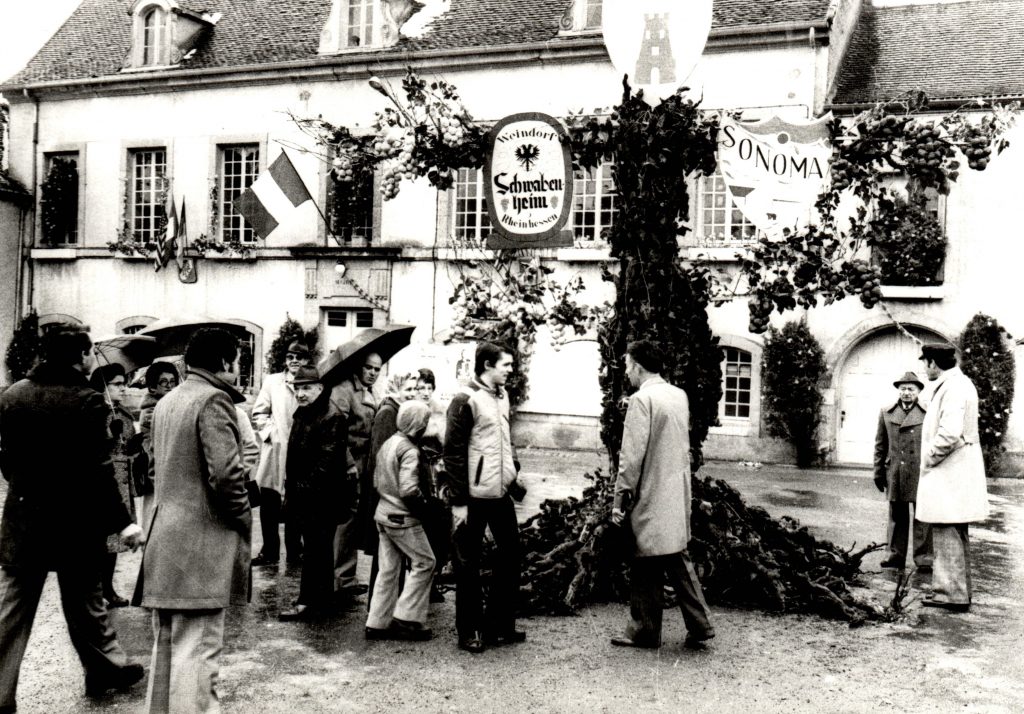
Archives de la Confrérie des Chevaliers du Tastevin

